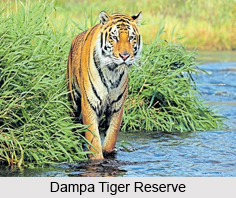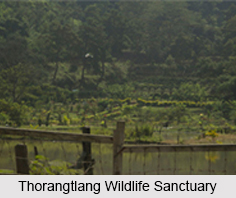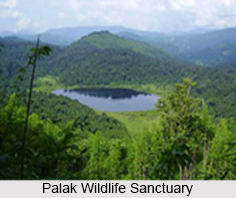 The state of Mizoram is located in the north eastern part of India. This state has rolling hills, valleys, rivers like Chhimtuipui, lakes like Palak Lake and Tam Dil Lake, flora and fauna and pleasant climate. All these factors draw tourists to this state. Wildlife Sanctuaries of Mizoram are no exception in this regard. Some of the wildlife sanctuaries of Mizoram are described below.
Dampa Tiger Reserve, Mizoram
The state of Mizoram is located in the north eastern part of India. This state has rolling hills, valleys, rivers like Chhimtuipui, lakes like Palak Lake and Tam Dil Lake, flora and fauna and pleasant climate. All these factors draw tourists to this state. Wildlife Sanctuaries of Mizoram are no exception in this regard. Some of the wildlife sanctuaries of Mizoram are described below.
Dampa Tiger Reserve, Mizoram
Dampa Tiger Reserve is a wildlife sanctuary situated in the western part of Mizoram. It has the distinction of being the largest wildlife sanctuary of the state. It was established in 1985 and occupies an area of approximately 550 square kilometers. This park is occupied by forest interpolated with steep precipitous hills, deep valleys, jungle streams, ripping rivulets, natural salt licks, bamboo forest and scrub areas, leopards, Indian bison, barking deer, sloth bear, gibbons, langurs, slow loris etc.
 Khawnglung Wildlife Sanctuary, Mizoram
Khawnglung Wildlife Sanctuary, Mizoram
Khawnglung Wildlife Sanctuary is located in Lunglei at an elevation of about 1300 m above sea level. It is spread over an area of about 35 square kilometers. Some of the occupants of the sanctuary are sambhar, hoolock gibbon, Himalayan serow, wild boar, barking deer and leopard.
Lengteng Wildlife Sanctuary, Mizoram
Lengteng Wildlife Sanctuary is located in Champhai district in eastern Mizoram. It was declared a protected area in 1999 and a national wildlife sanctuary on 31st of May, 2001. It is spread over an area of about 120 square kilometers. The inmates of this sanctuary are evergreen and semi-evergreen trees, tiger, leopard, sambar deer, barking deer, goral, serow etc.
 Ngengpui Wildlife Sanctuary, Mizoram
Ngengpui Wildlife Sanctuary, Mizoram
Ngengpui Wildlife Sanctuary is located near the Indo-Bangladesh border. It is spread over an area of about 110 square kilometers. This sanctuary serves as a home to virgin sub-tropical evergreen forests, semi-evergreen forests, tiger, clouded leopard, elephant, gaur, barking deer, sambar, wild boar, flowerpecker, pen-pheasant etc.
Thorangtlang Wildlife Sanctuary, Mizoram
Thorangtlang Wildlife Sanctuary is situated at Thorangtlang in the district of Lunglei. This sanctuary is spread over an area of about 50 square kilometers. Some of the occupants of the sanctuary are leopard, elephant, gaur, wild dog, sambar, barking deer, sloth bear, hoolock gibbon, leaf monkey, common langur etc.
Palak Wildlife Sanctuary, Mizoram
Palak Wildlife Sanctuary is located in Saiha district within the Palak Lake Reserve Forest. This sanctuary is adorned with towering hills and serves as a home to big cats, birds, insects, amphibians and reptiles.
Other Wildlife Sanctuaries of Mizoram
Some of the other Wildlife Sanctuaries of Mizoram are Tawi Wildlife Sanctuary, Tokalo Wildlife Sanctuary and Pualreng Wildlife Sanctuary.



















